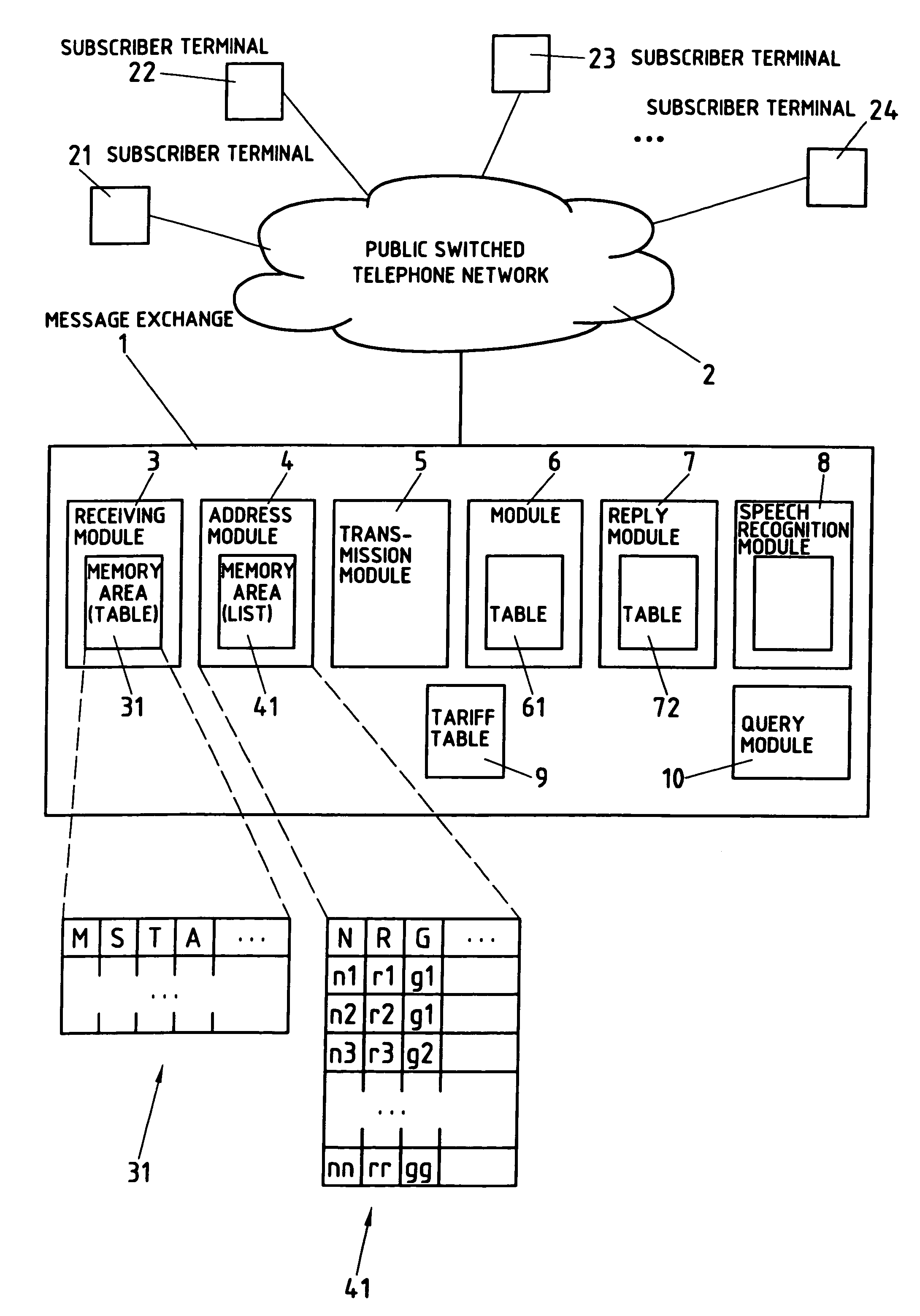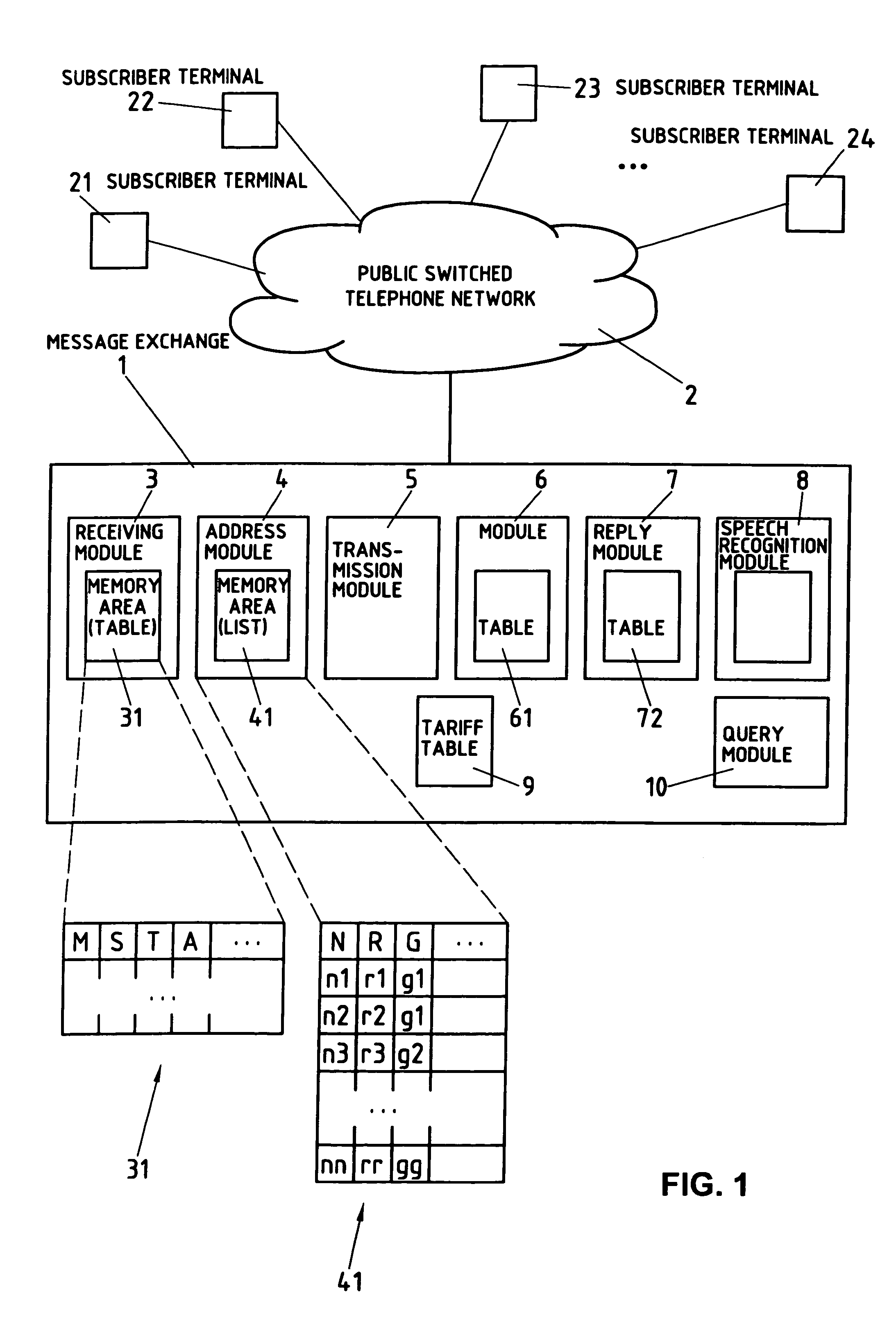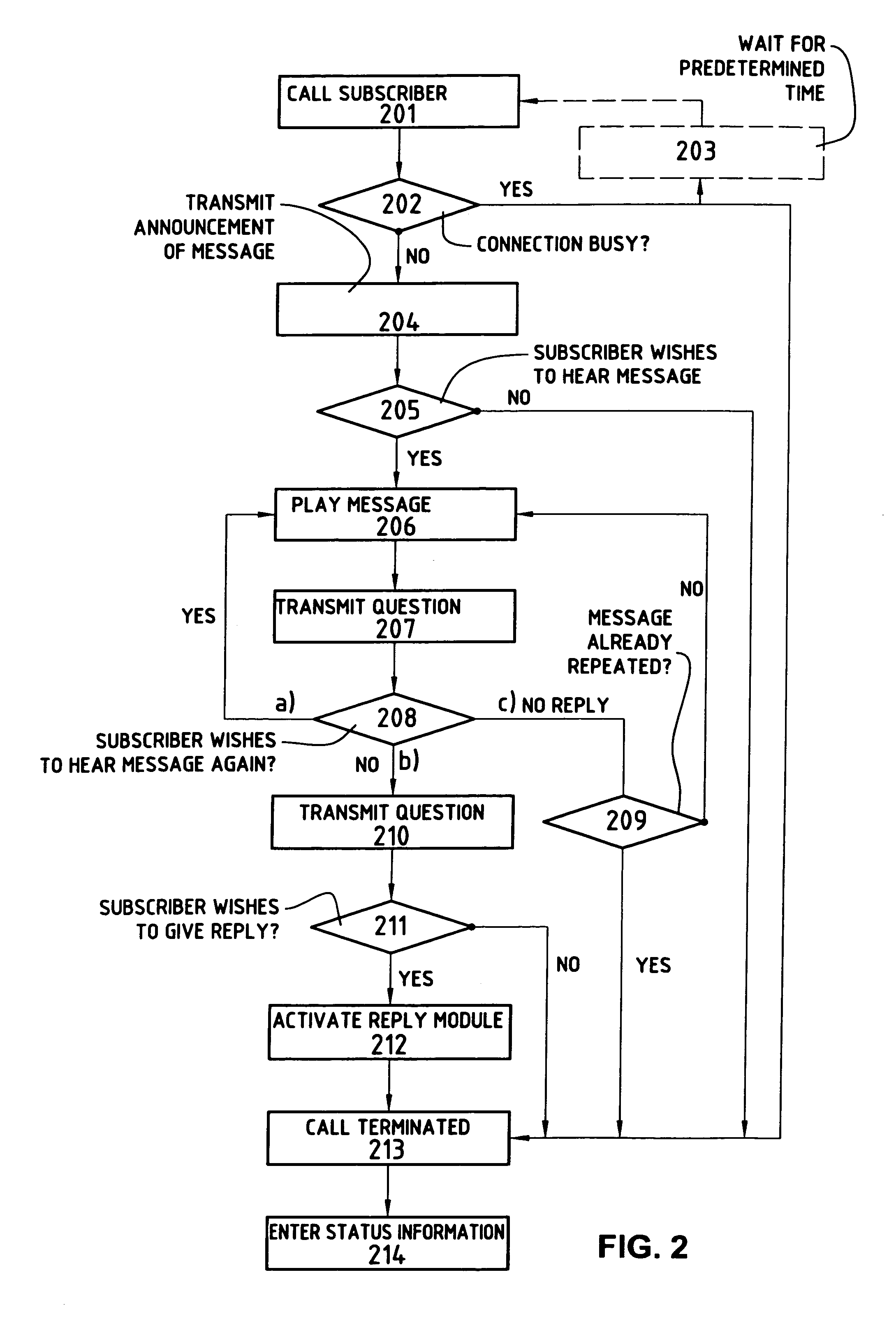Message exchange and method for distributing messages in telephone networks
a telephone network and message exchange technology, applied in special services for subscribers, substation equipment, electrical appliances, etc., can solve the problems of not being able not being able to direct reply to the writer of the message, and not being able to make it possible for a user to transmit a message to a plurality of addressees
- Summary
- Abstract
- Description
- Claims
- Application Information
AI Technical Summary
Benefits of technology
Problems solved by technology
Method used
Image
Examples
second embodiment
[0025]In a second embodiment above, the transmitting subscriber determines the addressee by entering the name by means of the selection keys of his terminal or an identification number of a subscriber or a group of subscribers by means of selection keys of his terminal. In this variant, the typed-in name or the identification number is received by the receiving module 3 and compared, for example, with the entries in a personal list 41 of the transmitting subscriber 21, the administration of which will be described later. As can be learned from the table 41, illustrated schematically in FIG. 1, the value of the entered group G=g1 corresponds, for example, to two subscribers with the names N=n1 and N=n2, or respectively their call numbers R=r1 and R=r2, or the value of the entered name N=n3 corresponds to the call number R=r3. The receiving module 3 can correspondingly enter the call numbers r1 and r2, or respectively r3 in table 31, as the identification of the subscribers to whom th...
third embodiment
[0026]In a third embodiment, the transmitting subscriber 21 determines the addressees by transmitting the names thereof and / or the name of a group of subscribers by means of spoken language to the message exchange 1, where they are received by the receiving module 3. In a similar way as in the second variant, the receiving module 3 compares the received names and / or names of groups with the entries in the above-mentioned personal list 41 of the transmitting subscriber 21, and determines the call numbers belonging thereto. In addition, the services of a speech recognition module 8 of the message exchange 1 can be used thereby, which are based on commercially available software programs and which convert the received spoken names into text that is compared with the alphanumerically stored names and / or group names of the personal list 41. As an alternative, the receiving module 3 can have at its disposal programmed comparison algorithms by means of which the received spoken names are c...
PUM
 Login to View More
Login to View More Abstract
Description
Claims
Application Information
 Login to View More
Login to View More - R&D
- Intellectual Property
- Life Sciences
- Materials
- Tech Scout
- Unparalleled Data Quality
- Higher Quality Content
- 60% Fewer Hallucinations
Browse by: Latest US Patents, China's latest patents, Technical Efficacy Thesaurus, Application Domain, Technology Topic, Popular Technical Reports.
© 2025 PatSnap. All rights reserved.Legal|Privacy policy|Modern Slavery Act Transparency Statement|Sitemap|About US| Contact US: help@patsnap.com



